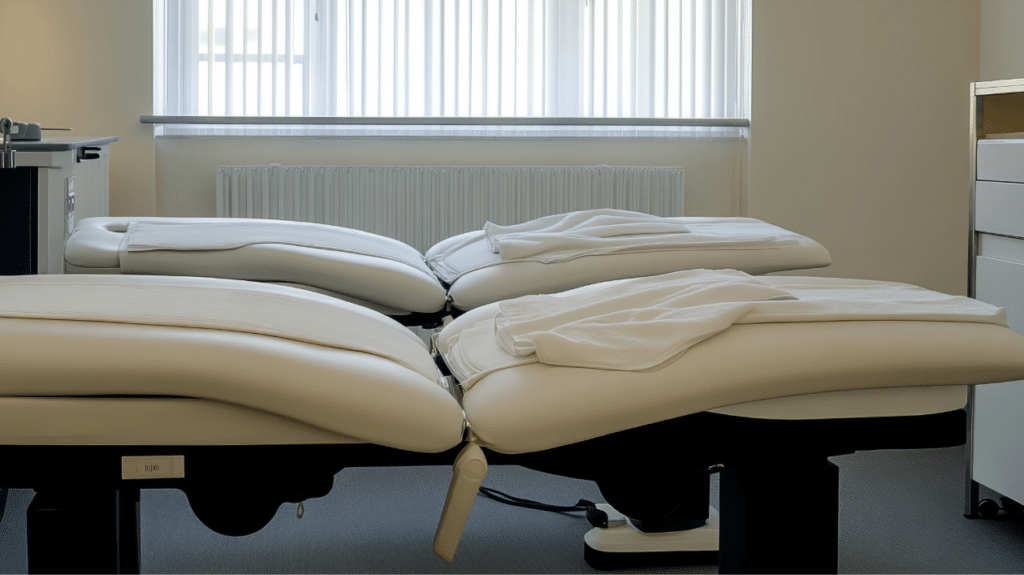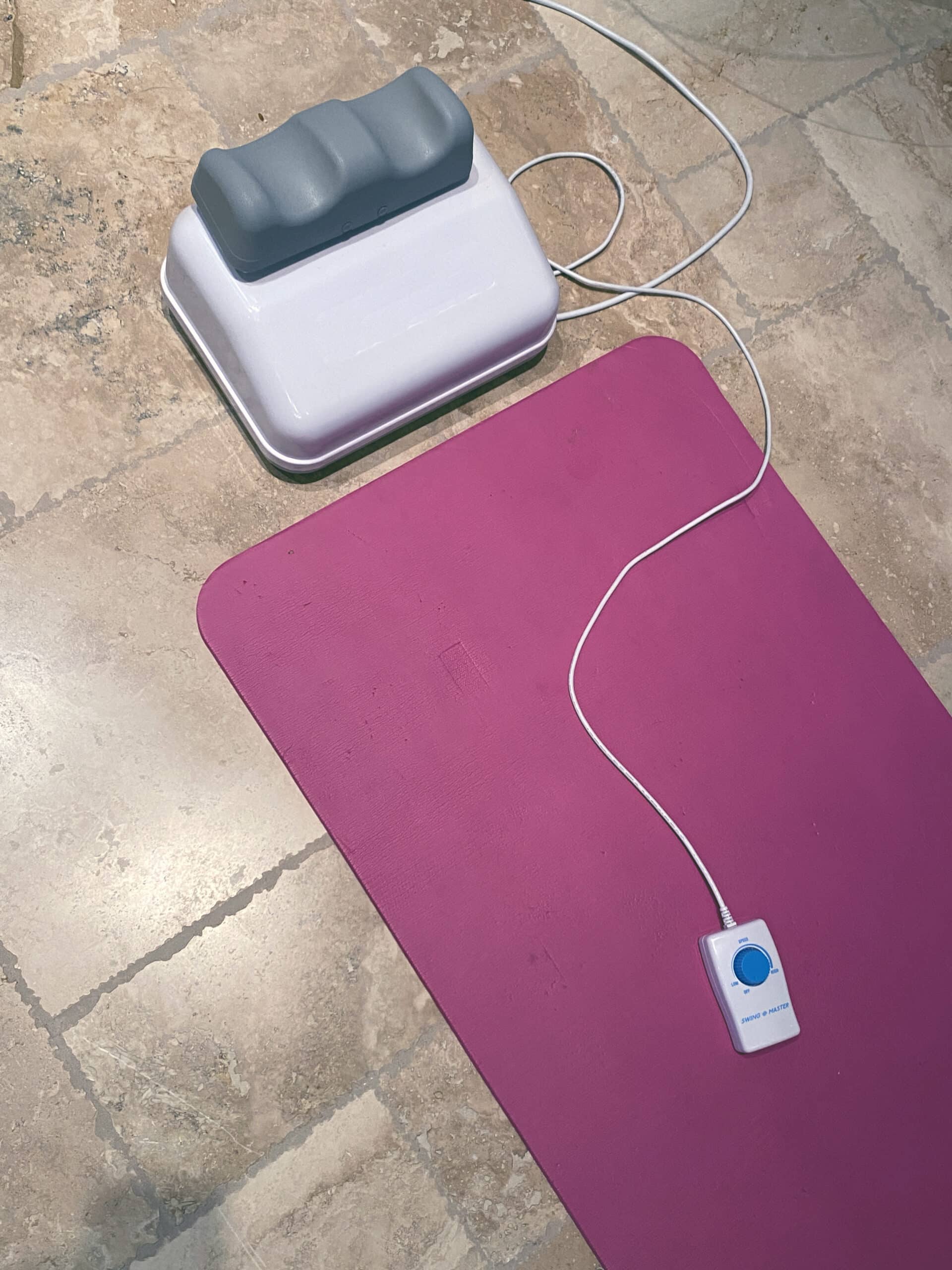
Why I Decided to Try Pelvic Floor Therapy
It’s not often that I try something new and expect to feel worse instead of better. But when I went in for my first pelvic floor therapy session, that’s exactly what happened. I had heard about pelvic floor therapy as a helpful treatment for issues like neck pain, bladder problems, and even some aspects of chronic illness like CIRS. After experiencing some serious body discomfort, and hearing positive reviews from friends who had found relief, I decided to give it a try.
What I didn’t expect was that one gentle, seemingly straightforward session would leave me in a state of intense body-wide aches and pain for days afterward.

As someone with Chronic Inflammatory Response Syndrome (CIRS), I’ve learned that my body can react unpredictably to various therapies. I’ve been dealing with a constellation of symptoms for years, including fatigue, joint pain, and chronic inflammation and weight fluctuation. After a series of consultations with my doctor, pelvic floor therapy was recommended to help manage some pelvic-related symptoms, like tightness and pain in my pelvic area. I was hopeful, thinking that this might be another tool to add to my healing toolbox.
Pelvic floor dysfunction isn’t something I had given much thought to before, but it turns out that tightness or imbalances in the pelvic floor can impact a lot of systems in the body—especially for those of us dealing with chronic illness. My therapist explained that pelvic floor therapy could help with posture, pain relief, and even ease some of the systemic tension that could be exacerbating other chronic issues.
The idea of a “gentle” therapy felt comforting. I was ready to trust the process and take a step toward feeling better. Little did I know how intense that “gentle” therapy would turn out to be for me.
A Gentle Beginning
When I arrived at my first pelvic floor therapy session, my therapist was kind and thorough. She explained the process, ensuring I felt comfortable, and began with some simple, gentle techniques to help assess the state of my pelvic floor muscles. The session involved using light pressure to identify areas of tension and discomfort. It didn’t feel intense or painful, and I left the session feeling relaxed and open to the healing process.
There was nothing about that first session that gave me any indication of what was to come. In fact, I felt good as I walked out of the office. There was a sense of lightness and hope that I might finally be taking a positive step toward alleviating some of the chronic discomfort I had been experiencing.
The Unexpected Aftermath
However, just a few hours after the session, something unexpected happened. My body began to feel… off. It started with a subtle soreness, but as the evening wore on, the discomfort intensified. The next morning, I woke up to an overwhelming, full-body ache unlike anything I had experienced before.
It felt as though every muscle in my body was tight and inflamed—neck, back, arms, legs, and many areas I didn’t know I had. I was in so much pain that I could barely get out of bed. I could not use the stairs. What was supposed to be a gentle and therapeutic session had triggered something much more intense than I had anticipated. The discomfort was so severe that I had trouble even sitting comfortably. I was bewildered. How could one session cause such a profound reaction in my body?
I had heard of the occasional “healing crisis,” but this felt like more than just a temporary flare-up. This was different. The aches were not just localized to my pelvic area, but spread throughout my entire body, as though my muscles were on high alert, reacting to the therapy in ways I couldn’t fully understand.
My Body’s Response
I reached out to my therapist, hoping she could help explain what I was feeling. She reassured me that while my reaction was rare, it wasn’t entirely unheard of. She explained that pelvic floor therapy works deeply within the body’s musculature and can sometimes trigger a healing response in the nervous system. This reaction is especially common for people like me with underlying chronic conditions, such as CIRS, which can make the body more sensitive to any kind of therapy or manipulation.
In my case, the session may have stirred up deep-seated tension in my pelvic floor muscles, which were likely compensating for other imbalances in my body. When the muscles were released during the session, it could have caused a sort of systemic release of stored tension throughout my entire body, leaving me with these widespread aches. It’s as though my body was reacting to the sudden shift, and all the tightness I had been carrying in other parts of my body suddenly came to the surface.
I also learned that with therapies like pelvic floor work, sometimes the muscles and tissues can become temporarily inflamed or aggravated before they start to heal. It was frustrating to hear that this could be part of the process, but it helped me understand that the pain I was feeling wasn’t necessarily a sign that the therapy was “wrong” for me. Instead, it was a sign that my body was undergoing a process of release and rebalancing, which was ultimately necessary for healing.
The Healing Process: Patience and Recovery
After talking with my therapist and doctor, I decided to rest and take care of my body in the days following the reaction. I focused on gentle stretching, hot baths, and rest. I also made sure to stay hydrated, as I know that staying well-hydrated can help flush out any toxins released during the healing process. I gave myself permission to take it slow, knowing that my body was working hard to adjust and release all that built-up tension.
Over the next few days, I gradually started to feel better. The extreme aches began to subside, and I was able to move around more comfortably. My body began to feel less tight, and I noticed a slight improvement in the pelvic discomfort that had originally prompted me to try pelvic floor therapy.
While the aftermath of that first session was intense, I didn’t let it discourage me from continuing with the therapy. I had hoped for improvement, and even though the journey wasn’t as smooth as I expected, I could see that there was potential for real healing if I allowed my body the time it needed to adjust.
What I’ve Learned from This Experience
This experience taught me a few important lessons about both my body and the healing process. First, I’ve learned that even gentle therapies can trigger unexpected reactions, especially for people with complex conditions like CIRS. My body can be hypersensitive to changes, and sometimes, the healing process involves a bit of discomfort and frustration before it gets better. (This seems to be a recurring theme of my healing journey.)
Second, I’ve learned the importance of listening to my body. While I initially panicked at the intensity of the pain, I reminded myself that healing isn’t linear. It requires patience, rest, and support. Not every treatment will be smooth, but I trust that my body will adjust and that this discomfort will ultimately lead to progress.
Lastly, I’ve learned to communicate openly with my healthcare providers. By reaching out to my therapist and asking questions, I gained a clearer understanding of what was happening inside my body. Understanding the process helped me feel more empowered as I navigated this challenging experience.
Looking Ahead
Although the extreme aches after my first pelvic floor therapy session were unsettling, I am still open to continuing treatment. I now know that I need to approach it with patience and caution, and perhaps take more time between sessions to allow my body to recover fully. I’m also committed to listening to my body’s signals, adjusting the therapy as needed, and being kind to myself during this journey.
Healing isn’t always a straight line, and sometimes the body’s reactions are unexpected. But I’m learning to embrace this process with an open heart and mind, even if the road to relief isn’t always easy.






